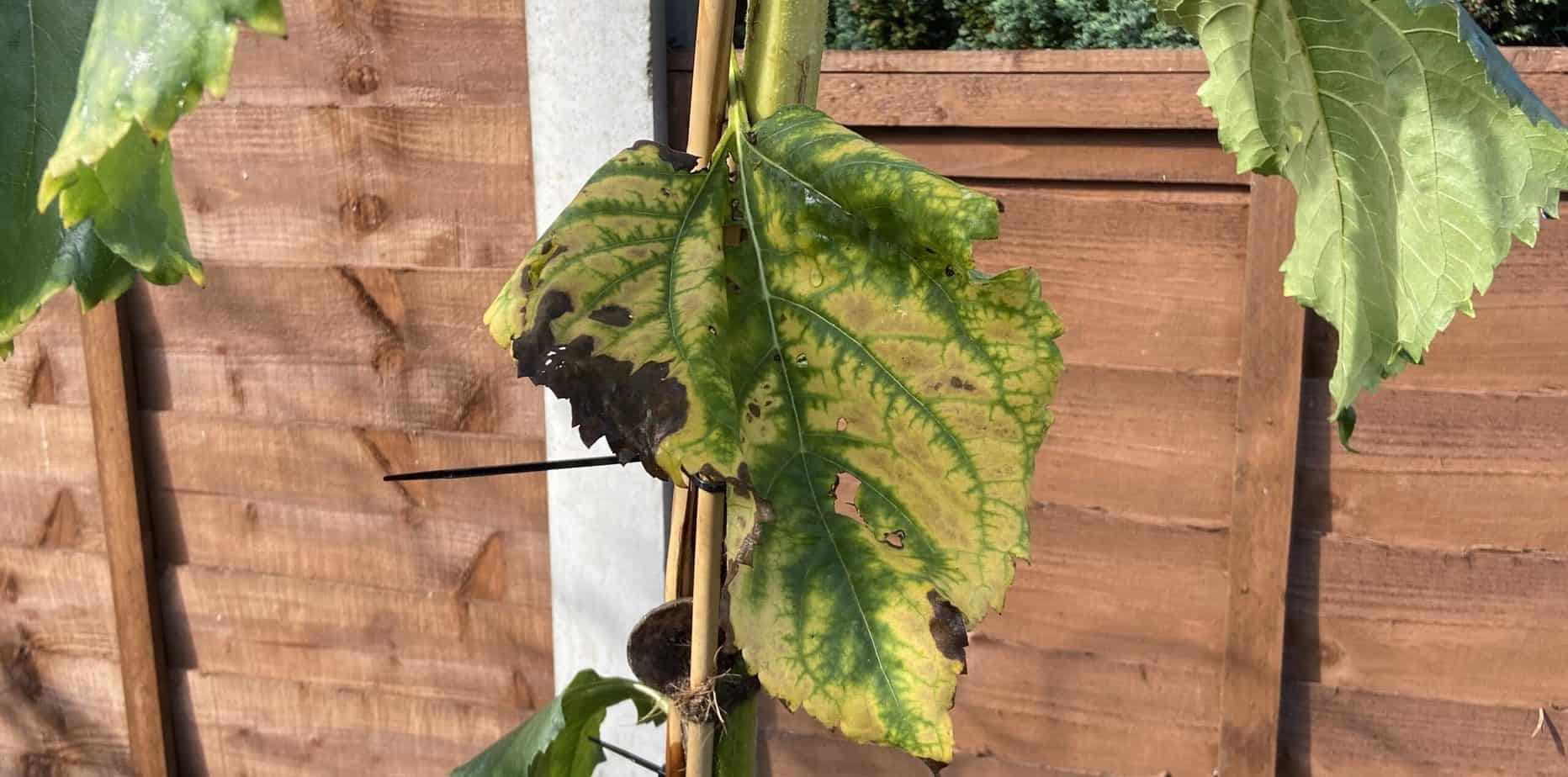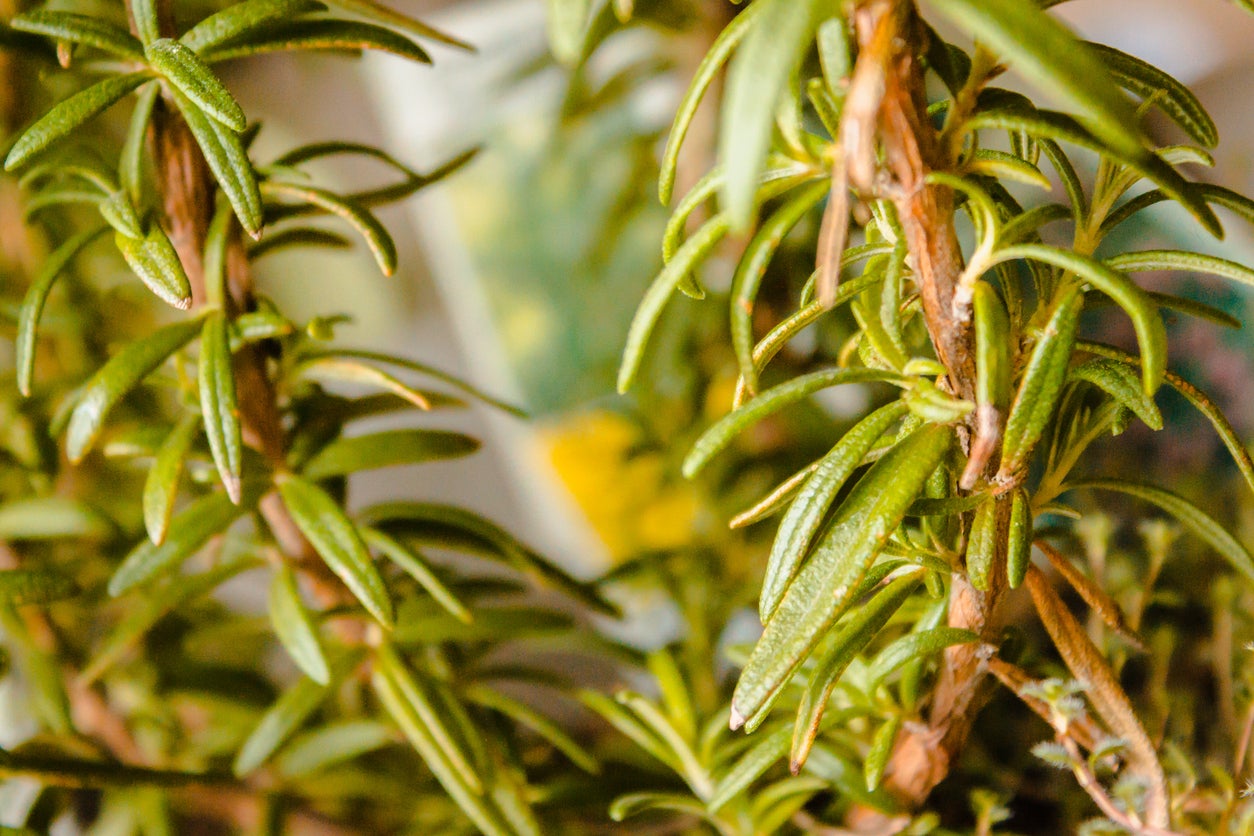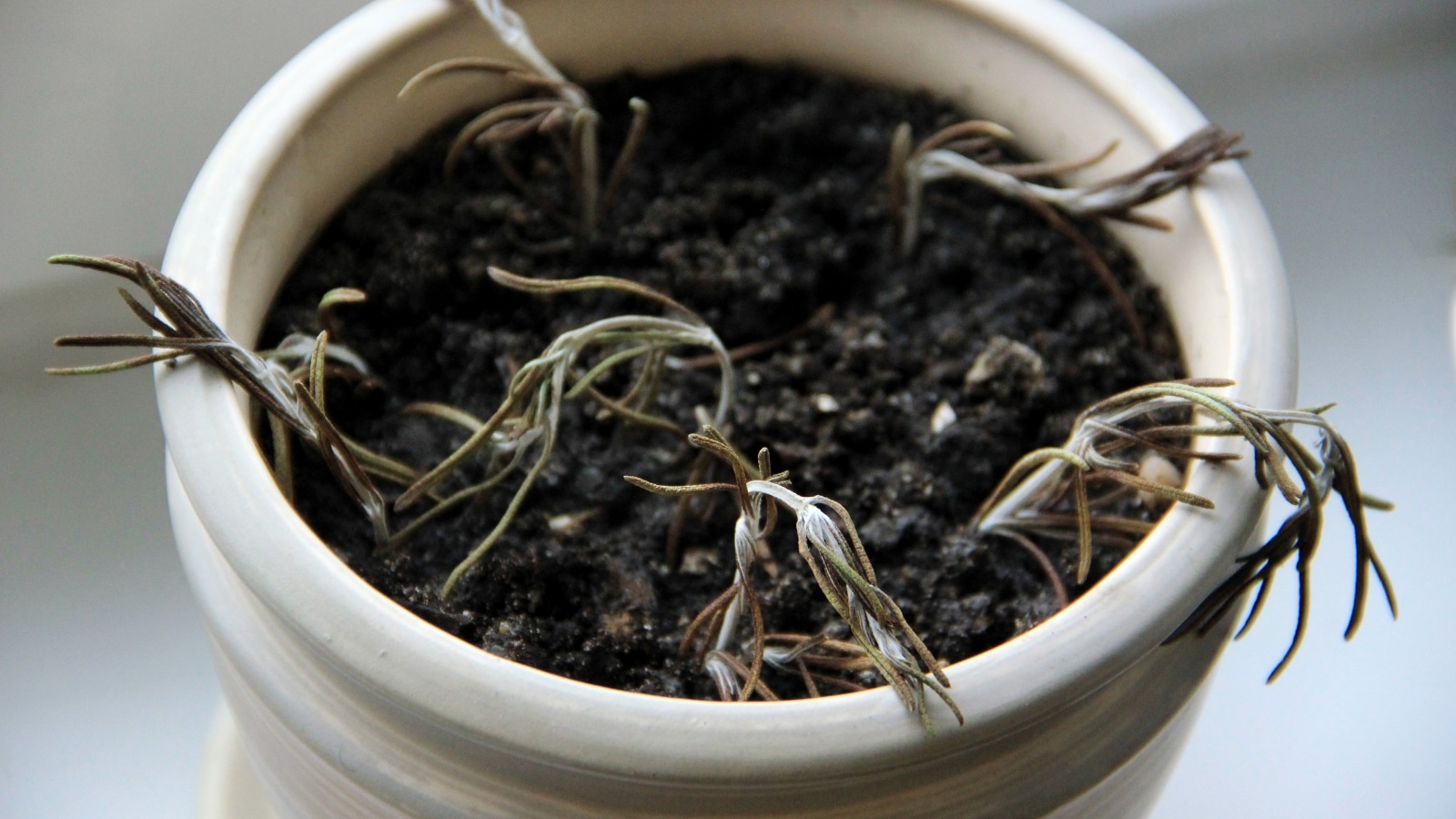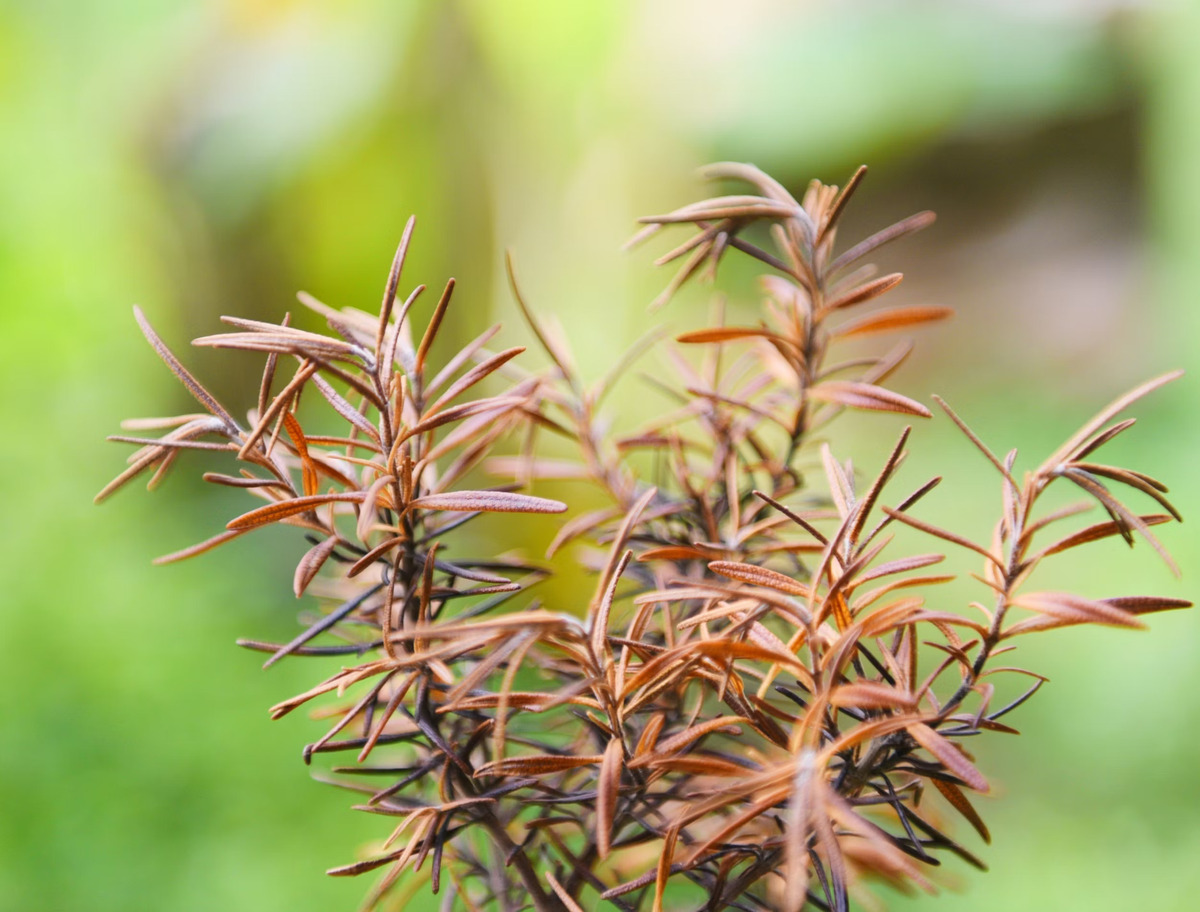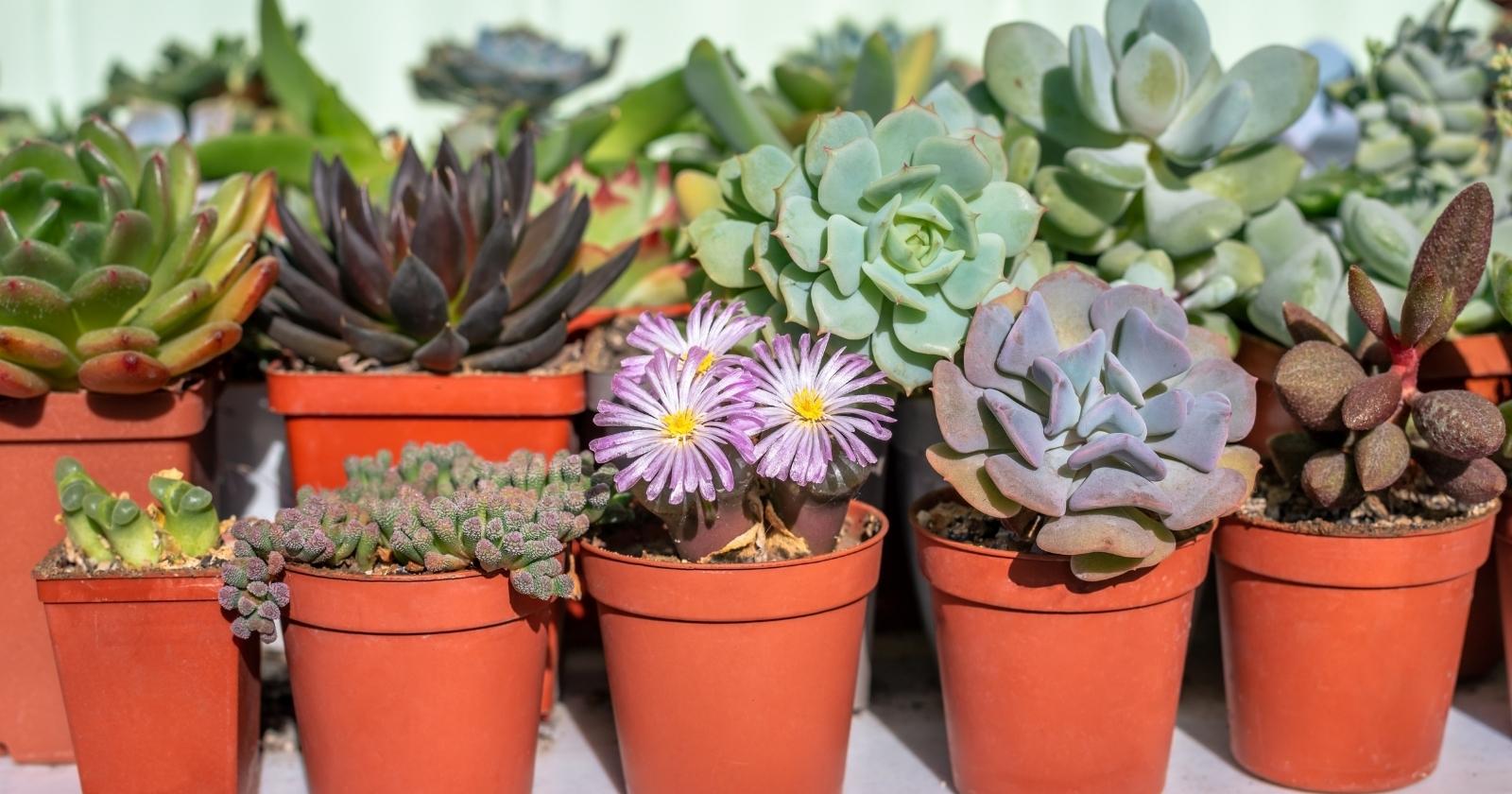Home>Types of Gardening>Ornamental Gardening>Why Do Succulents Turn Red
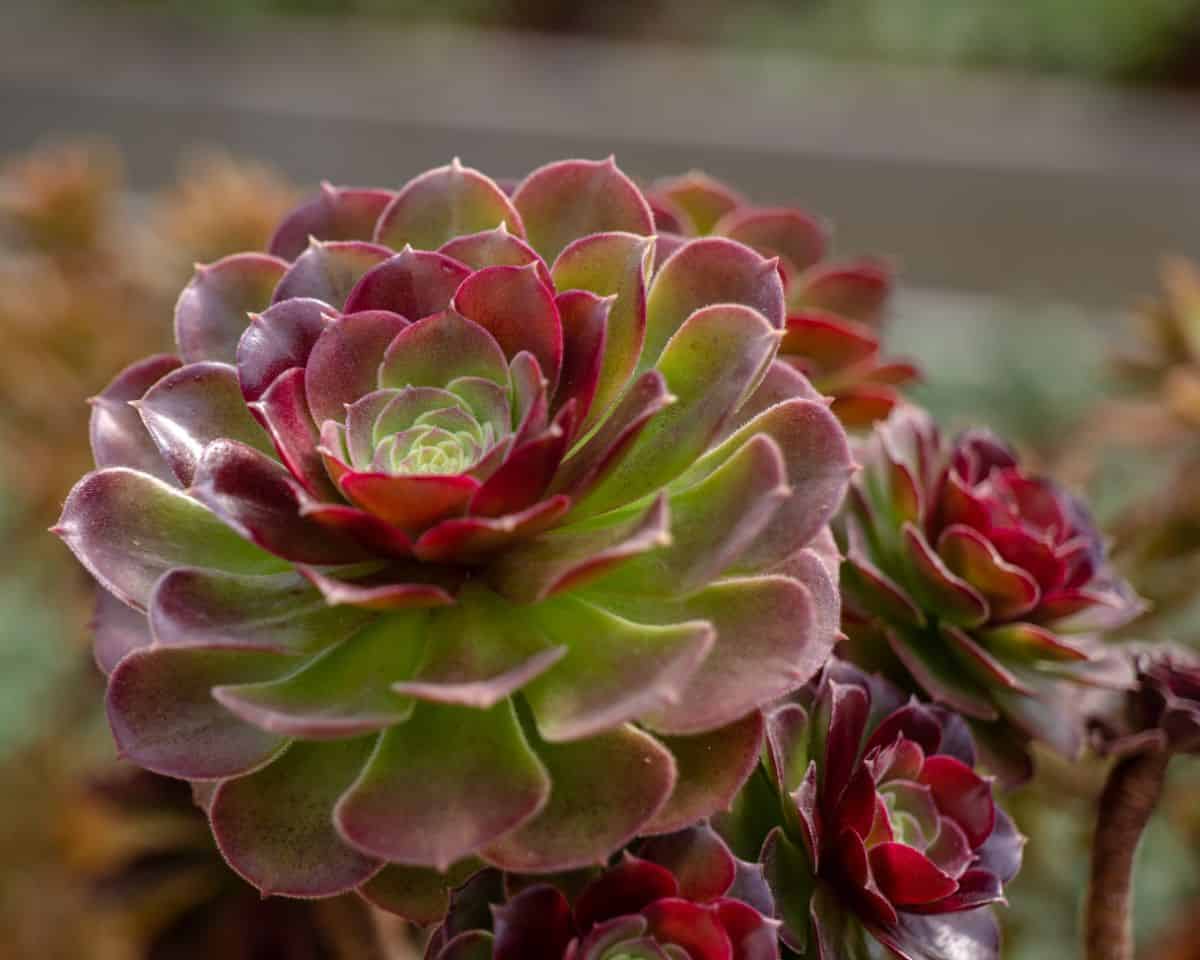

Ornamental Gardening
Why Do Succulents Turn Red
Modified: February 9, 2024
Discover why succulents turn red in ornamental gardening. Learn how to care for red succulents and keep them vibrant and healthy.
(Many of the links in this article redirect to a specific reviewed product. Your purchase of these products through affiliate links helps to generate commission for Chicagolandgardening.com, at no extra cost. Learn more)
Table of Contents
Introduction
When it comes to ornamental gardening, succulents have gained tremendous popularity in recent years. These captivating plants are not only known for their unique shapes and textures, but also for their stunning array of colors. One of the most fascinating and sought-after colors in succulents is red.
Red succulents stand out in any garden or indoor display, adding a vibrant and eye-catching element to the overall aesthetic. But have you ever wondered why succulents turn red? There are several factors that contribute to this stunning color transformation, ranging from environmental conditions to genetic factors.
In this article, we will delve into the reasons behind why succulents turn red. We will explore the various stressors, environmental factors, nutritional elements, and genetic traits that can influence the vibrant hues of these plants. Additionally, we will discuss the different types of succulents that are more likely to display red pigmentation and provide tips for cultivating and maintaining these stunning red succulents in your own garden.
If you’re a succulent enthusiast or simply intrigued by the allure of red plants, this article is for you. So, let’s dive into the world of succulents and uncover the secrets behind their captivating red coloration.
Understanding Succulents
Succulents belong to a diverse group of plants that have adapted to survive in arid and semi-arid climates. Their ability to store water in specialized tissues, such as fleshy leaves, stems, or roots, allows them to withstand long periods of drought. This unique adaptation makes succulents highly resilient and low-maintenance plants, making them a popular choice for both indoor and outdoor gardens.
What sets succulents apart is their ability to store water in their tissues, which gives them a plump, fleshy appearance. This water storage capacity not only enables them to survive in dry conditions but also contributes to their ability to tolerate various stressors that can cause them to turn red.
Most succulents have a green coloration, but there are certain triggers that can cause them to display hues of red, ranging from subtle blushes to deep crimson tones. These triggers can either be environmental factors, nutritional deficiencies, genetic traits, or even stressors that the plant experiences.
Succulents come in various shapes, sizes, and types, each with its own unique characteristics. Some popular succulent varieties that are known to turn red include Echeveria, Sedum, Kalanchoe, and Aloe. These plants have a natural inclination towards displaying red pigmentation, making them highly sought-after by plant enthusiasts and collectors.
Understanding the different factors that contribute to the red coloration of succulents is key to maintaining their health and vibrancy. In the following sections, we will explore these factors in more detail, helping you gain a deeper insight into why succulents turn red and how to care for them to keep their stunning colors intact.
Factors That Cause Red Coloration in Succulents
The stunning red coloration seen in succulents can be attributed to a combination of factors. These factors include stressors, environmental conditions, nutritional deficiencies, and genetic traits. Let’s explore each of these factors in more detail:
- Stress Factors: Succulents are known for their resilience and adaptability. When exposed to stressors such as intense sunlight, extreme temperatures, or insufficient watering, the plants respond by producing protective pigments, including red hues. These pigments act as a sunscreen and help shield the plant from excessive sunlight or water loss.
- Environmental Factors: The intensity and duration of sunlight, temperature fluctuations, and humidity levels play a significant role in the red coloration of succulents. Succulents that are exposed to high light levels or cool temperatures may exhibit more pronounced red pigmentation.
- Nutritional Factors: Certain nutrient deficiencies can trigger red coloration in succulents. For example, low nitrogen levels can influence the production of pigments, leading to red leaves or stems. Additionally, higher levels of phosphorus can also contribute to red coloration.
- Genetic Factors: Some succulent species naturally possess genetic traits that make them prone to red coloration. These genetic factors influence the production and accumulation of pigments, leading to the characteristic red hues seen in certain succulent varieties.
It is important to note that while stress and environmental factors can induce temporary red coloration in succulents, genetic factors determine the extent and permanence of the red pigmentation. Succulents with strong genetic traits for red coloration are more likely to maintain their vibrant hues consistently.
Understanding these factors that cause red coloration in succulents can help you take appropriate care of your plants and maintain their vibrant appearance. In the following sections, we will discuss specific types of succulents that are known for their red coloration and provide tips for cultivating and keeping these beautiful plants healthy.
Stress Factors
Succulents are remarkably resilient plants, capable of adapting to various stressors in their environment. When succulents encounter stressful conditions, they activate a defense mechanism that includes producing red pigments. This color change serves as a protective measure to shield the plant from further damage. Let’s explore some of the common stress factors that can cause succulents to turn red:
- Intense Sunlight: Succulents are typically sun-loving plants, but excessive exposure to intense sunlight can cause stress. The plant responds by producing red pigments called anthocyanins. These pigments act as a natural sunscreen, absorbing excess light and protecting the plant’s tissues from damage.
- Temperature Extremes: Fluctuations in temperature, particularly exposure to high or low temperatures, can be stressful for succulents. The stress response triggers the production of red pigments as a protective measure. Red coloration is often more prominent in cooler temperatures, especially during colder months.
- Watering Issues: Overwatering or underwatering succulents can lead to stress and subsequent red coloration. Overwatering causes the roots to become waterlogged, leading to root rot and stress on the plant. Underwatering causes dehydration, leading to stress and color change as a survival response.
- Transplant Shock: When succulents are transplanted or go through a repotting process, they can experience shock. This can temporarily stress the plant and result in red coloration. With proper care and adjustment, the plant will recover and return to its normal color.
- Pests and Diseases: Infestation by pests or diseases can cause stress in succulents. In response to these attacks, the plant activates its defense mechanisms and may exhibit red coloration. Proper pest and disease management is essential to prevent prolonged stress and damage to the plant.
It is important to note that while stress may induce temporary red coloration in succulents, it is crucial to alleviate the underlying cause of stress to avoid long-term damage. Maintaining optimal growing conditions, such as providing appropriate light, temperature, and watering, can help reduce stress and preserve the health and vibrancy of your succulents.
In the next sections, we will explore the influence of environmental, nutritional, and genetic factors on the red coloration of succulents. Understanding these factors will enhance your ability to care for and cultivate red succulents successfully.
Environmental Factors
Environmental conditions play a crucial role in the coloration of succulents, including the development of red pigmentation. Various aspects, such as sunlight, temperature, and humidity, can influence the intensity and extent of red coloration in these plants. Let’s explore some of the key environmental factors:
- Sunlight: The amount and intensity of sunlight that succulents receive impact their coloration. Succulents grown in full sun tend to develop more intense red pigmentation compared to those grown in partial shade. Exposure to bright, direct sunlight triggers the production of red pigments, helping protect the plant from excessive light and potential damage.
- Temperature: Temperature fluctuations can also affect the red coloration of succulents. Cooler temperatures often enhance the development of red hues in succulents, especially during colder months or in regions with distinct seasons. Succulents exposed to lower temperatures tend to display more pronounced red pigmentation.
- Humidity: While succulents are known for their ability to tolerate drought, humidity levels can still impact their coloration. Succulents grown in high humidity environments may exhibit less red pigmentation compared to those grown in drier conditions. Low humidity can act as a stressor, triggering the development of red coloration.
- Seasonal Changes: Succulents may display different levels of red coloration throughout the year due to seasonal variations in environmental conditions. In the dormant period or during the colder months, succulents may exhibit more intense red hues as a response to reduced sunlight and cooler temperatures.
- Air Circulation: Proper air circulation is crucial for succulents as it helps prevent excess moisture buildup and fungal diseases. Insufficient air circulation can create a humid environment that may detract from the development of red pigmentation. Ensuring good airflow around your plants can help maintain optimal conditions for their coloration.
It’s important to remember that not all succulents will turn red in the same environmental conditions. The impact of environmental factors on the red coloration of succulents can vary depending on the plant species, genetics, and individual characteristics. Observing and understanding the response of your succulents to different environmental factors will enable you to create an optimal growing environment for vibrant red coloration.
Next, we will explore how nutritional factors contribute to the stunning red coloration seen in certain succulents.
Nutritional Factors
The availability and balance of nutrients in the soil can influence the coloration of succulents, including the development of red pigmentation. Nutritional deficiencies or imbalances can trigger metabolic changes in the plant, leading to a change in pigmentation. Let’s explore the key nutritional factors that contribute to the red coloration of succulents:
- Nitrogen deficiency: Nitrogen is an essential nutrient for plant growth and development. Insufficient nitrogen levels in the soil can cause succulents to display red coloration. Nitrogen is vital for chlorophyll production, and its deficiency can result in the accumulation of anthocyanin pigments, giving the plant a red appearance.
- Phosphorus levels: Higher levels of phosphorus in the soil can also contribute to the development of red coloration in succulents. Excessive phosphorus can interfere with the uptake and utilization of other nutrients, leading to metabolic changes and the production of red pigments.
- Micro and macro-nutrient imbalances: Imbalances of other essential nutrients, such as potassium, calcium, magnesium, and iron, can affect the overall health and coloration of succulents. Nutritional deficiencies or excesses can disrupt the plant’s metabolic processes, leading to changes in pigmentation, including red coloration.
- Soil pH: The pH level of the soil can impact nutrient availability. Acidic or alkaline soils can affect nutrient uptake by succulents, leading to nutrient imbalances and subsequent changes in pigmentation. Maintaining a balanced pH level in the soil is important to ensure healthy growth and vibrant colors.
It’s essential to provide succulents with a well-balanced, nutrient-rich soil to maintain their overall health and vibrant colors. Regularly monitoring and correcting nutrient deficiencies or imbalances will help prevent color aberrations and promote optimal growth.
In the following sections, we will discuss the role of genetic factors and explore specific types of succulents known for their red coloration. Understanding these factors will assist you in selecting and cultivating stunning red succulents in your garden or indoor space.
Genetic Factors
Genetic factors play a significant role in the red coloration of succulents. Some succulent species naturally possess genetic traits that make them more prone to displaying red pigmentation. These genetic factors influence the production and accumulation of pigments, resulting in the distinct red hues seen in certain succulent varieties.
Genetic traits can directly affect the biosynthesis of pigments, including anthocyanins, which are responsible for the red, purple, and blue colors in plants. Plants with genetic predispositions for producing higher levels of anthocyanins are more likely to exhibit intense red pigmentation.
Furthermore, crossbreeding different succulent species or strains can lead to the development of new hybrids with unique genetic traits. These hybrids may showcase enhanced red coloration, creating an even wider range of red succulents available to gardeners and enthusiasts.
It is important to note that genetic factors alone do not guarantee red coloration in succulents. Environmental conditions, nutritional factors, and stressors still play a crucial role in activating and enhancing the expression of the plant’s genetic traits for red pigmentation.
By understanding the genetic factors at play, succulent enthusiasts and breeders can selectively propagate and cultivate succulents with desired red coloration, creating a diverse array of striking plants that are sure to make a statement in any garden or collection.
In the next section, we will explore some popular succulent varieties that are known for their red coloration, providing insight into their care requirements and how to cultivate these vibrant plants effectively.
Types of Succulents That Turn Red
While many succulent species exhibit green foliage, there are specific types of succulents that are more likely to display stunning red coloration. These plants are sought after by gardening enthusiasts and collectors for their eye-catching hues. Let’s explore some popular succulent varieties that are known for their red coloration:
- Echeveria: Echeverias are beloved succulents known for their rosette-shaped foliage. Many Echeveria species and cultivars, such as Echeveria ‘Lipstick’ or Echeveria ‘Red Prince,’ develop beautiful deep-red leaves. These red Echeverias make striking focal points in succulent arrangements or as potted specimens.
- Sedum: Sedums, also known as stonecrops, are a diverse group of succulents that encompass various species and cultivars. Sedum adolphii and Sedum rubrotinctum are popular choices that can turn red under stress or in direct sunlight. The red-toned foliage adds a pop of color and visual interest to gardens or container plantings.
- Kalanchoe: Kalanchoe species are known for their vibrant flowers and succulent leaves. Some Kalanchoe varieties, like Kalanchoe blossfeldiana and Kalanchoe luciae, have leaves that can turn red, especially when exposed to sun or abrupt changes in environmental conditions. They make stunning houseplants or additions to rock gardens.
- Aloe: Aloe plants offer an impressive range of shapes and sizes, with many species displaying red or reddish-brown leaves. Aloe vera itself can develop red pigmentation when exposed to strong sunlight, while Aloe cameronii is renowned for its deep coppery-red foliage, making it a standout in any succulent collection.
- Crassula: Crassulas are a diverse group of succulents that includes many popular varieties with red coloration. Crassula capitella, also known as ‘Campfire Plant,’ showcases vivid red tips on its fleshy leaves. Crassula ovata ‘Red Pagoda’ is another sought-after variety, displaying red-edged leaves arranged in stacked layers.
These are just a few examples of succulent varieties that turn red, but there are many other species and cultivars that can exhibit red coloration under certain conditions. It’s important to note that individual plants may show varying degrees of red pigmentation depending on their genetics, environment, and care.
Cultivating these red succulents requires providing them with appropriate growing conditions, including well-draining soil, adequate sunlight, and proper watering practices. By understanding the specific needs of these succulent varieties, you can successfully encourage and maintain their vibrant red coloration.
In the next section, we will provide valuable tips for keeping succulents healthy and vibrant, ensuring they thrive with their beautiful red hues intact.
Cultivating Red Succulents
Cultivating red succulents can be a rewarding and visually striking addition to any garden or indoor space. To help your red succulents thrive and maintain their vibrant coloration, consider the following tips:
- Optimal Light Exposure: Most red succulents require bright, indirect sunlight to develop their characteristic pigmentation. Place your succulents in a location that receives a few hours of indirect sunlight each day. Avoid exposing them to intense, direct sunlight, as it can lead to sunburn or discoloration.
- Well-Draining Soil: Succulents thrive in well-draining soil that allows excess water to pass through quickly. Use a cactus or succulent-specific soil mix or amend regular potting soil with additional perlite or coarse sand to enhance drainage. Avoid overwatering, as it can lead to root rot and other issues.
- Watering Practices: Succulents have water-storing capabilities, and they prefer to dry out between watering sessions. Water your red succulents thoroughly but infrequently, allowing the soil to dry out completely before watering again. Err on the side of underwatering rather than overwatering to prevent rot and promote vibrant coloration.
- Container Selection: Choose containers with drainage holes to ensure excess water can escape. Avoid using pots that are too large, as this can lead to water retention and moisture-related issues. Opt for containers made of porous materials like terracotta, which help with airflow and water evaporation.
- Temperature and Humidity: Red succulents generally prefer moderate temperatures, avoiding extremes on either end of the spectrum. They can tolerate short periods of cooler or warmer temperatures, but prolonged exposure to extreme heat or cold can affect their health and coloration. Maintain a comfortable temperature range and provide adequate airflow to prevent humidity-related problems.
- Fertilization: Red succulents benefit from occasional fertilization during their active growth phase. Use a balanced, water-soluble fertilizer diluted to half strength and apply it according to the manufacturer’s instructions. Avoid over-fertilization, as it can lead to excessive growth at the expense of vibrant coloration.
Remember, each succulent species may have unique care requirements, so it’s important to research and familiarize yourself with the specific needs of your red succulents. Regularly observe the condition of your plants, making adjustments to their care as needed.
By providing optimal growing conditions and proper care, your red succulents will reward you with their stunning hues and unique beauty. They are sure to become a focal point in your garden or a conversation starter in your indoor plant collection.
Now that we have explored the cultivation of red succulents, let’s conclude with some overall tips for keeping your succulents healthy and vibrant.
Tips for Keeping Succulents Healthy and Vibrant
To ensure the health and vibrancy of your succulents, consider the following tips:
- Provide Adequate Lighting: Succulents thrive in bright, indirect sunlight. Place them near a window or in an area with sufficient natural light. If sunlight is limited, consider using grow lights to supplement their lighting needs.
- Water Sparingly: Succulents have low water requirements and are prone to overwatering. Allow the soil to dry out between waterings and be mindful of the signs of dehydration, such as shriveling leaves, before providing water. Err on the side of underwatering.
- Use Well-Draining Soil: Choose a well-draining soil mix specifically formulated for succulents or amend regular potting soil with perlite or coarse sand. This ensures proper airflow to the roots and prevents water retention.
- Avoid Excessive Humidity: Succulents prefer dry and arid conditions. Avoid placing them in areas with high humidity, such as bathrooms or near humidifiers. Ample air circulation will help prevent fungal diseases and maintain overall plant health.
- Maintain Moderate Temperatures: Succulents generally prefer moderate temperatures, avoiding extreme heat or cold. Protect them from frost or scorching temperatures, and provide adequate ventilation to prevent heat stress.
- Monitor for Pests and Diseases: Keep a close eye on your succulents for signs of pests, such as mealybugs or spider mites, as well as common diseases like root rot. Quickly address any issues by removing affected parts or using appropriate organic pest control methods.
- Rotate and Prune: Rotate your succulents regularly to promote even growth and prevent them from leaning towards the light source. Prune leggy or damaged stems to encourage a more compact and aesthetically pleasing form.
- Avoid Overfertilizing: Succulents have modest fertilizer needs, requiring only occasional feeding during the growing season. Use a balanced fertilizer diluted to half strength and apply following the manufacturer’s instructions. Overfertilizing can lead to poor growth and coloration.
- Protect from Harsh Weather Conditions: During extreme weather conditions, such as storms or heatwaves, consider providing temporary shelter or moving your succulents indoors to protect them from potential damage.
- Observe and Adjust: Regularly observe your succulents for any signs of stress or color changes. Adjust their care routine as necessary to provide the optimal conditions for their growth and coloration.
By following these tips, you can ensure the long-term health and vibrancy of your succulents. Remember that every succulent is unique, so it’s crucial to understand the specific care requirements of each plant species or variety in your collection.
Cultivating succulents can be a rewarding journey that allows you to appreciate their fascinating forms and vibrant colors. Enjoy the process of caring for these remarkable plants and watch as they thrive and bring beauty to your home or garden.
Conclusion
Succulents with red coloration are captivating additions to any ornamental garden or indoor space. The stunning hues of red that these plants exhibit add a vibrant and eye-catching element to any landscape. Understanding the factors that contribute to the red coloration of succulents allows us to better care for and appreciate these beautiful plants.
We have explored various factors that can cause succulents to turn red, including stressors, environmental conditions, nutritional deficiencies, and genetic traits. Stress factors like intense sunlight, temperature extremes, and watering issues can trigger the production of red pigments as a protective mechanism. Environmental factors, such as sunlight, temperature, and humidity, also play a significant role in the development of red coloration in succulents. Nutritional deficiencies or imbalances can lead to metabolic changes, affecting the production of pigments and resulting in red foliage.
Genetic factors are another important aspect that influences the red coloration of succulents. Some succulent species naturally possess genetic traits that make them more prone to developing red hues. Crossbreeding and hybridization efforts have also contributed to the creation of new succulent varieties with unique and enhanced red coloration.
Understanding these factors allows us to cultivate and maintain red succulents successfully. Providing optimal growing conditions, including proper lighting, well-draining soil, and appropriate watering practices, is crucial for their health and vibrancy. Monitoring for pests and diseases, maintaining moderate temperatures, and avoiding overfertilization ensure the long-term vitality of these unique plants.
Whether it’s the iconic Echeverias, the diverse group of Sedums, the vibrant Kalanchoes, the striking Aloes, or the diverse collection of Crassulas, there are numerous succulent varieties that display the captivating red coloration. Selecting, cultivating, and appreciating these red succulents adds depth, beauty, and visual interest to any garden or indoor space.
So, whether you are a succulent enthusiast, a gardening novice, or simply someone who appreciates the beauty of plants, exploring the world of red succulents is a wonderful journey. Enjoy the process of caring for these fascinating plants, and witness how they thrive and adorn your surroundings with their vibrant red hues.


